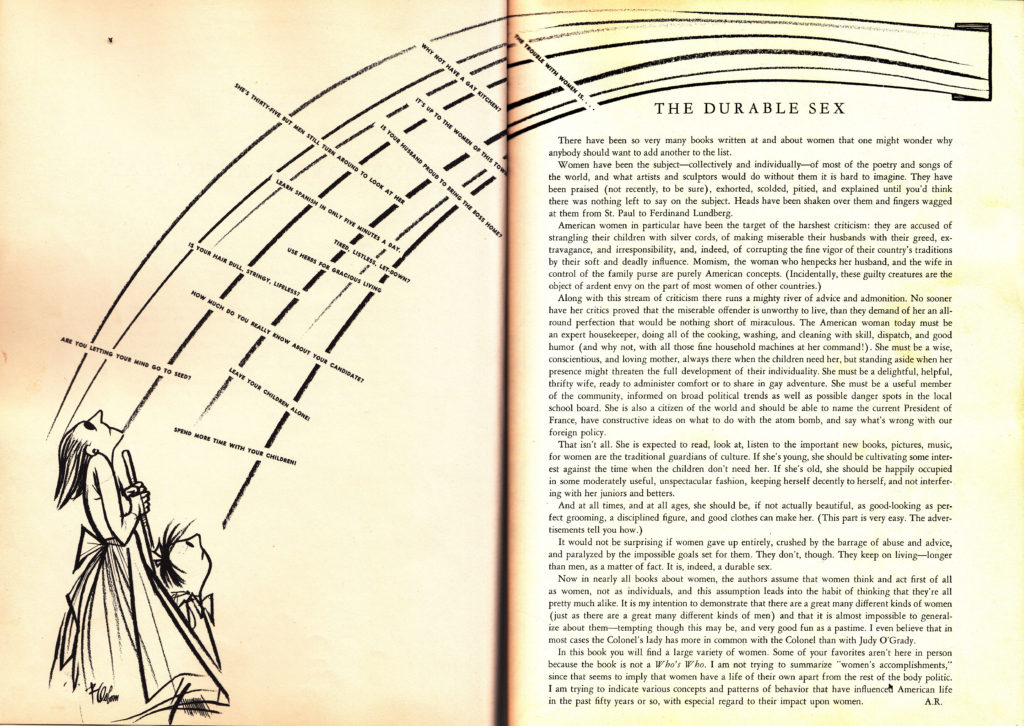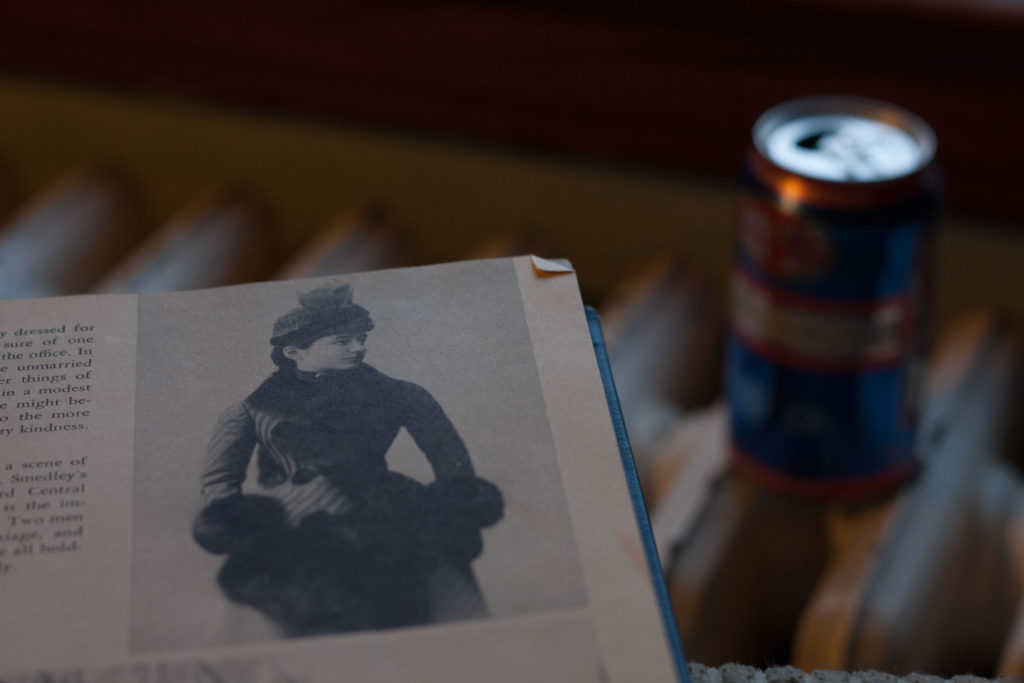Have a drink with: Agnes Rogers
The future is female.
Ask her about: Equality, dignity, good manners, mild snark.
The other day I was reading a lifestyle blog talking about the challenge of living a halfway sane female existence in the face of social pressures that demand women be simultaneously effortless, clean, intelligent, ambitious, authentic, confident and masterful. (Also pretty. Duh.)
Surely most could empathize with the featured image, and the look of quivering overwhelm on the woman’s face as she faces a swirl of demands:
“Spend more time with your children!”
“Leave your children alone!”
“Use herbs for gracious living.”
“Is your hair dull, stringy, lifeless?”
“How much do you really know about your candidate?”
“She’s thirty-five but men still turn around to look at her.”
“Are you letting your mind go to seed?”
“It’s up to the women of this town!”
“Learn Spanish in only five minutes a day!”
Oh. Did I say lifestyle blog? I meant 1940’s coffee table book.
Women Are Here to Stay, Agnes Rogers’ 1949 catalog of female accomplishment in the post-industrial era, gathers photographs of ladies from the preceding decades for a tour through the female experience of American life. Rogers features labor organizers, pilots, socialites, bad girls and big-game hunters; talks about fashion and politics, parenting norms, Detroit policewomen, the Triangle Shirtwaist Fire and the entry of women into American college life; and wraps the lot in suitably polite and perky text that you can just about hear recited in newsreel cadence (I like to imagine she sounded like Glynnis Johns).
In the introduction, Rogers is sober and on-target against a set of expectations that feel awfully familiar decades later:

As the book moves out of its early years talking about Victorian-era agitators, suffragists, athletes and saucy performers, the book depicts a more media-driven, fluffier version of American womanhood. Keep in mind that, writing in 1949, Rogers was addressing a female readership that had transitioned into new, active workforce roles during World War II and was in many ways being pushed to resume traditional ones. Women are Here to Stay and its insistence that women did not in fact have “a life of their own apart from the rest of the body politic” was likely a reminder women needed as much as men did.
“It would not be surprising if women gave up entirely, crushed by the barrage of abuse and advice, and paralyzed by the impossible goals set for them,” writes Rogers. “They don’t, though. They keep on living – longer than men, as a matter of fact. It is, indeed, a durable sex.”
Amen, sister.
Fun Facts:
Rogers’ words on the tyranny of expectation for women are echoed in modern journalism that criticizes the effortless, fully-juggled charm and inexplicably white furniture of the female entrepreneurial blogosphere: “These women don’t just maintain squeaky-clean, camera-ready homes and adorable families, they also run independent businesses, wear perfect outfits, rock exquisitely styled hair—and find the time to blog about it.”
It regrettably goes without saying that the book features naught but white ladies. Black women were in the 1940’s still largely professionally confined to the servant class; Phyllis Palmer writes “The New Deal maintained racial hierarchies even as it aided African Americans through relief projects.”
Agnes Rogers was a 1916 Vassar grad and an editor at Reader’s Digest.
And she had a sly sense of humor: “And at all times, and at all ages, she should be, if not actually beautiful, as good-looking as perfect grooming, a disciplined figure, and good clothes can make her. (This part is very easy. The advertisements tell you how.)” Sick burn, Agnes.
Additional Reading:
Agnes Rogers, Women Are Here to Stay: The Durable Sex in its Infinite Variety Through Half a Century of American Life (1949)
Fantastic study of activism among Americans of color during the New Deal era: Phyllis Palmer, “Black Domestics During the Depression: Workers, Organizers, Social Commentators,” Prologue Magazine (Summer 1997, Vol. 29, No. 2)
Holly Hilgenberg, “Better Homes & Bloggers,” Bitch Media, #54, Spring 2012
